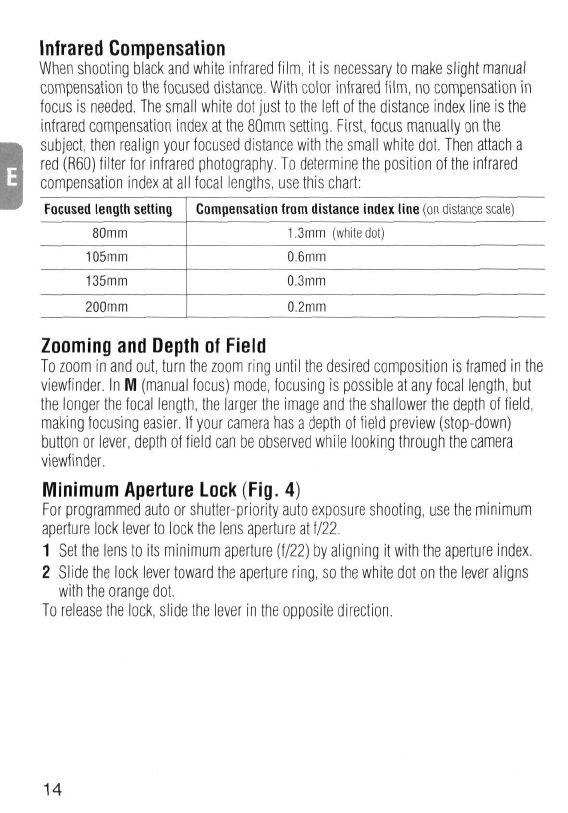
Infrared Compensation
When shooting black and white infrared
film,
it is
necessary to make slight manual
compensation to the focused distance. With color infrared
film,
no compensation
in
focus
is
needed. The small white dot just to the left of the distance index line is the
infrared compensation index at the 80mm setting. First, focus manually on the
subject, then realign your focused distance with the small white dot. Then attach
a
red (R60) filter for infrared photography. To determine the position of the infrared
compensation index at all focal lengths, use this chart:
Focused length setting
80mm
105mm
135mm
200mm
Compensation from distance index line (on distance scale)
1.3mm (white dot)
0.6mm
0.3mm
0.2mm
Zooming and Depth
of
Field
To zoom in and out, turn the zoom ring until the desired composition is framed in the
viewfinder. In
M
(manual focus) mode, focusing
is
possible at any focal length, but
the longer the focal length, the larger the image and the shallower the depth of
field,
making focusing easier.
If
your camera has a depth of field preview (stop-down)
button
or
lever, depth of field can be observed while looking through the camera
viewfinder.
Minimum Aperture Lock (Fig.
4)
For programmed auto or shutter-priority auto exposure shooting, use the minimum
aperture lock lever to lock the lens aperture at f/22.
1 Set the lens to its minimum aperture (f/22) by aligning
it
with the aperture index.
2 Slide the lock lever toward the aperture
ring,
so the white dot on the lever aligns
with the orange dot.
To release the lock, slide the lever in the opposite direction.
14


















